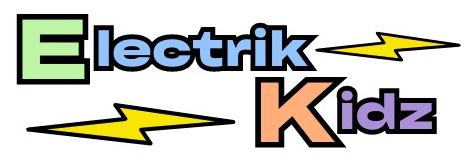
Do you remember what it was like when you first began learning to tell time? For many of us, our early schooling only touches upon the basics: understanding how an analog clock works and some basic principles guiding 12-hour calendars. However, as children become more aware of their environment, grasping a better understanding of common terms associated with clocks and calendars is an important step in academically and socially keeping up with their peers. In this article, we’ll explore age-appropriate techniques for teaching kids about telling time and calendars at 5.
Need ways to help your 5-year-old with their Time management skills?
Teaching children about clocks and calendars can help them form a foundation for understanding the importance of managing their time. It sets them up for success by helping them create useful routines and allows you to explain what they will do on any given day easily.
A good understanding of clocks and calendars can give young kids the tools necessary to practice habits like punctuality, organization, task prioritization, and goal setting – all important life skills that may come in handy now or later as they grow older.
Keep reading and make learning fun!
Introducing the concept of time to children – Why it is important, and What methods can be used to help them understand?
Introducing the concept of time to children is an important step in helping them understand their environment and eventually learn how to plan and manage their lives. While you are likely already familiar with teaching your 5-year-old about clocks and calendars, here are some fun and age-appropriate techniques that can help make the learning process easier:
1. Use hands-on activities: Simple activities like coloring in a paper clock or making a “clock tower” out of cereal boxes can help your child understand that there are different ways to tell time, and it doesn’t have to be complicated.
2. Play educational games: Playing games, such as Monopoly or the daily calendar game, can help your child practice their skill at telling the time and understanding what day of the week it is.
3. Use everyday objects to explain concepts: When doing everyday activities like grocery shopping or visiting a friend, use different times to explain how a clock and calendars work.
4. Utilize technology: Using devices such as phones, tablets, or even online apps can be a great way to help your child learn how to tell time and understand calendars.
These are just a few ways you can help kids at the age of 5 develop their understanding of clocks and calendars. With some guidance and patience, they’ll soon become experts!
Explaining the Concept of Days, Weeks, Months, and Years in a Simple way

Kids at the age of 5 are still developing their understanding of time, so it’s important to keep explanations simple. Here are some tips on how to help your child understand the concepts of days, weeks, months, and years:
1. Days: Start by explaining that a day comprises two parts – day and night – and that you can tell when it’s day or night by looking at the sun.
2. Weeks: Explain that a week comprises seven days, and each day has its name (Monday, Tuesday, etc.). Also, explain that weeks are usually part of a larger month.
3. Months: Teach your child about the months in a year and why each month has a different length. You can also explain how some months have special holidays and yearly events.
4. Years: Explain that years are made up of 365 days, and they usually follow a pattern (January, February, March, etc.).
Your child will slowly develop their understanding of time by merely introducing these concepts. Your 5-year-old can soon tell the time and understand calendars with enough practice and repetition.
Tips for Parents on helping their Children understand the concept of time better.
Here are some tips for parents to help their children understand the concept of time better:
1. Practice telling the time regularly: Have your child practice telling the time throughout the day, such as when they wake up, get dressed in the morning, or at bedtime.
2. Make it fun: Play games with your child, like “What time is it” and use fun activities like making a clock tower from cereal boxes to help them learn the concept of time.
3. Give rewards: Offer rewards for correctly telling the time or completing tasks within a certain timeframe. This will motivate your child to keep practicing and improve their time understanding.
4. Monitor progress: Keep track of your child’s understanding of clocks and calendars to ensure they are on the right track. If you notice that they are struggling, try different teaching methods or resources that may suit them.
Frequently Asked Questions About Telling Time: Developing an Understanding of Clocks and Calendars at the age of 5
Q: What type of clock is best for teaching kids about time?
A: An analog clock is best for young kids. It’s easier to understand how the hands move and what time each number represents.
Q: At what age should a child learn to tell the time?
A: It varies from child to child, but as a general rule, children should start learning to tell time at around 5 or 6 years old.
Conclusion
With the right level of guidance and assistance needed, there are a variety of ways parents can help their children develop an understanding of clocks and calendars at an early age. Making warm, fun memories while teaching this is also a great idea. Hands-on activities and speaking about specific topics regularly are proven to help children better understand the concepts. Additionally, introducing the concept with other materials like books and games can significantly affect how quickly children learn. All it takes is a commitment from both parent and child for success!
.
Subscribe to our email newsletter to get the latest posts delivered right to your email.

Comments